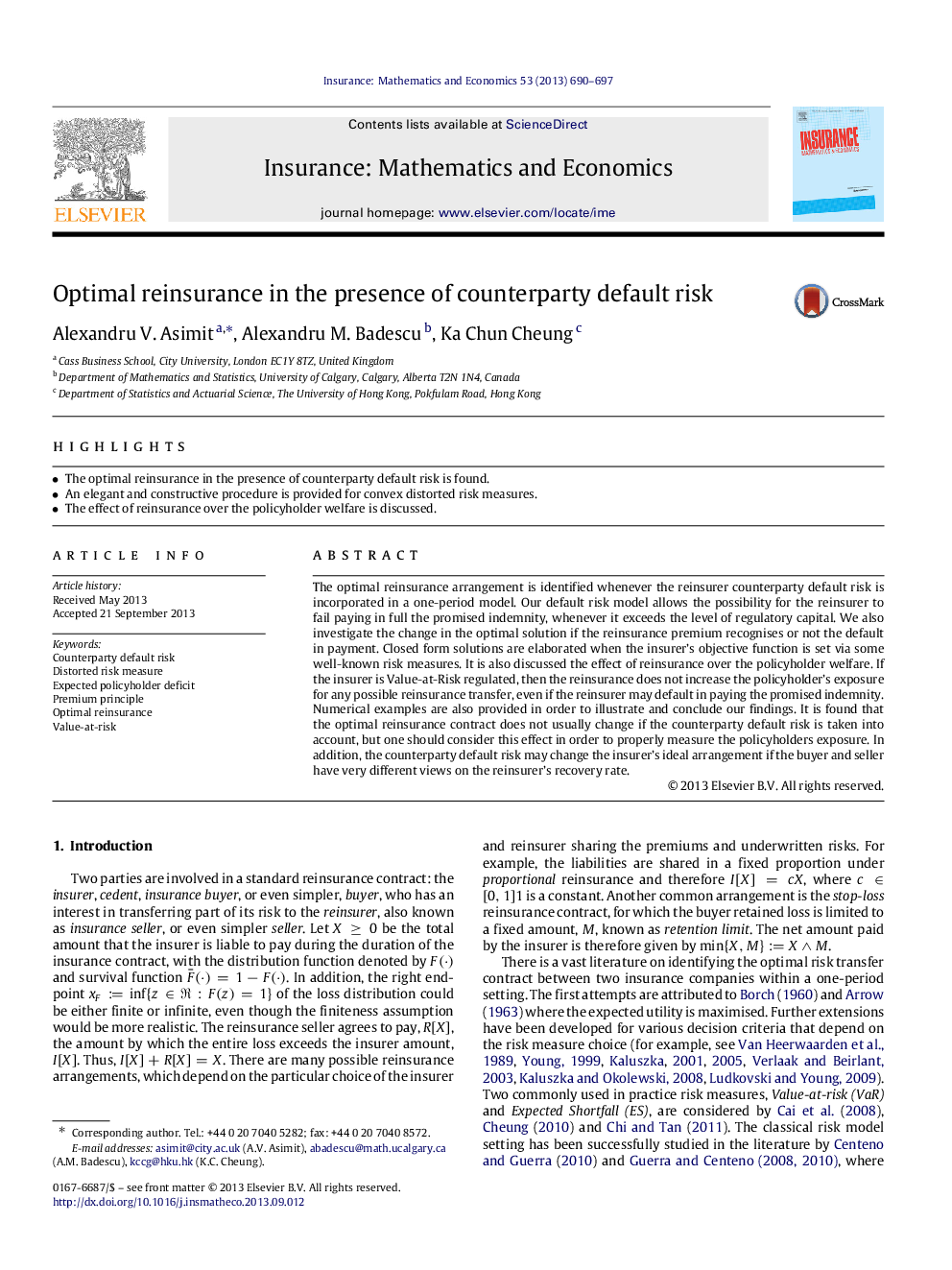| Article ID | Journal | Published Year | Pages | File Type |
|---|---|---|---|---|
| 5076698 | Insurance: Mathematics and Economics | 2013 | 8 Pages |
Abstract
The optimal reinsurance arrangement is identified whenever the reinsurer counterparty default risk is incorporated in a one-period model. Our default risk model allows the possibility for the reinsurer to fail paying in full the promised indemnity, whenever it exceeds the level of regulatory capital. We also investigate the change in the optimal solution if the reinsurance premium recognises or not the default in payment. Closed form solutions are elaborated when the insurer's objective function is set via some well-known risk measures. It is also discussed the effect of reinsurance over the policyholder welfare. If the insurer is Value-at-Risk regulated, then the reinsurance does not increase the policyholder's exposure for any possible reinsurance transfer, even if the reinsurer may default in paying the promised indemnity. Numerical examples are also provided in order to illustrate and conclude our findings. It is found that the optimal reinsurance contract does not usually change if the counterparty default risk is taken into account, but one should consider this effect in order to properly measure the policyholders exposure. In addition, the counterparty default risk may change the insurer's ideal arrangement if the buyer and seller have very different views on the reinsurer's recovery rate.
Related Topics
Physical Sciences and Engineering
Mathematics
Statistics and Probability
Authors
Alexandru V. Asimit, Alexandru M. Badescu, Ka Chun Cheung,
